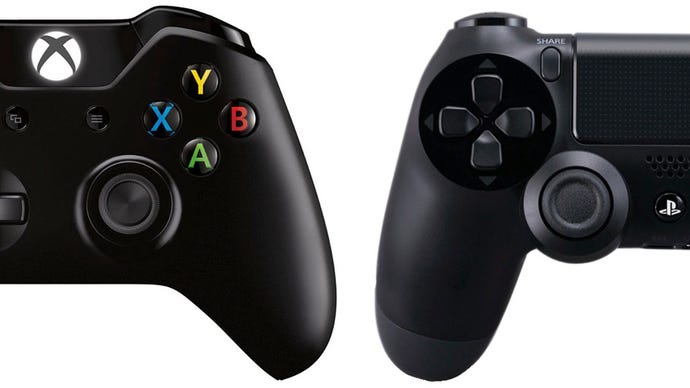How do the PS4 and Xbox One really stack up?
The PS4 has required a reputation for being more powerful than the Xbox One, but how much of that is true, and how much is over-simplification?
As armchair generals of the console was, we all think we know how the armies stack up. Because some - okay, many - Xbox One games have released supporting a lower resolution than the PS4 versions, the consensus is that Microsoft's console is less powerful.
From our perspective, the uncoupling of the Kinect, allowing developers to draw on system resources previously dedicated to the motion controller, has helped bring the Xbox One more into parity with the PS4. Destiny wasn't going to support 1080p on Xbox One, and now it can. Diablo 3 was similarly upgraded.
But this narrative, while fitting events and comments so far, isn't the full picture. And that's why interviews like this Digital Foundry chat with 4A Games chief technical officer Oles Shishkovstov are so valuable: the give an insider's perspective that we usually don't see.
Metro: Last Light developer 4A Games is one of the more open studios, but nothing is more likely to make a developer clam up than its comments starting huge flame wars. So let's try and be calm about this, okay?
Asked about the power of the PS4 and Xbox One, Shishkovstov said developers haven't even begun to tap the consoles' full power, and that this generation has the potential to last as long as the previous one despite the comparatively modest architecture.
As for how the two consoles stack up, i think it's best I quote the relevant portion of the interview in full:
Digital Foundry: "Xbox One's lower compute unit count, memory bandwidth and ESRAM issues are well documented. Resolution differences in multi-platform games are commonplace and in some titles we're even looking at 720p vs 1080p. What's your take on the differences between Xbox One and PlayStation 4?"
Oles Shishkovstov: "Well, you kind of answered your own question - PS4 is just a bit more powerful. You forgot to mention the ROP count, it's important too - and let's not forget that both CPU and GPU share bandwidth to DRAM [on both consoles]. I've seen a lot of cases while profiling Xbox One when the GPU could perform fast enough but only when the CPU is basically idle. Unfortunately I've even seen the other way round, when the CPU does perform as expected but only under idle GPU, even if it (the CPU) is supposed to get prioritised memory access. That is why Microsoft's decision to boost the clocks just before the launch was a sensible thing to do with the design set in stone.
"Counting pixel output probably isn't the best way to measure the difference between them though. There are plenty of other (and more important factors) that affect image quality besides resolution. We may push 40% more pixels per frame on PS4, but it's not 40% better as a result... your own eyes can tell you that."
Discussing developing for both consoles, Shishkovstov had some criticisms of the Xbox One's DirectX 11-based API. But he also made a point of saying that it's improving - rapidly.
"Microsoft is not sleeping, really. Each XDK that has been released both before and after the Xbox One launch has brought faster and faster draw-calls to the table," he said.
"They added tons of features just to work around limitations of the DX11 API model. They even made a DX12/GNM style do-it-yourself API available - although we didn't ship with it on Redux due to time constraints."
It's really worth going through the link above to read the full interview, as Shishkovstov goes into quite fine technical detail on development for console and PC.
Metro 2033 Redux and Metro: Last Light Redux are available now in North America and Europe and hit Australia next week. Both represent significant reworkings of the original games, ported to 4A Games' latest engine, and come with all patches, DLC and additional content released to date, among a slew of improvements and even a new, hardcore play mode for Last Light.


